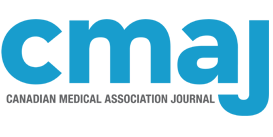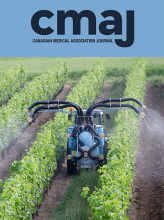In the last year, Health Canada’s Pest Management Regulatory Agency has been criticized for not releasing information about the safety of pesticides because data are considered confidential business information.
This level of secrecy contrasts with Health Canada’s efforts to improve transparency related to therapeutic products.
Vanessa’s Law gives the federal Minister of Health discretionary powers to share confidential business information on therapeutic products when it perceives there is a serious risk to human health or the environment.
The Minister of Health should be granted similar discretionary powers to make safety data for pesticides publicly available.
In 2021, Health Canada’s Pest Management Regulatory Agency (PMRA) proposed doubling the maximum residue limits for glyphosate in some food products, such as oats and beans.1 This proposal, made at Bayer-Monsanto’s request,2 raised serious concerns about the health impact of glyphosate-based herbicides (GBHs) in food consumed in Canada.
The most widely sold pesticides in Canada, GBHs are used on many crops, such as soybeans and corn, for grain desiccation or to kill weeds. Several studies and a meta-analysis have shown their harmful health impacts.3,4 For example, after reviewing independent scientific literature, the World Health Organization’s International Agency for Research on Cancer concluded that both glyphosate and GBHs (which contain other chemicals in addition to glyphosate) are genotoxic and probable carcinogens to humans and have a positive association with non-Hodgkin lymphoma.5 Nonetheless, Health Canada reapproved GBHs until 2032 and increased maximum residue limits above those in the United States and China. The PMRA considers that residues of glyphosate “will not pose an unacceptable risk to any segment of the population.”1 When civil society group Vigilance OGM submitted an Access to Information request to obtain the studies supporting that claim, PMRA sent, after 1 year, 229 totally blank pages.6 When pushed for more transparency, Health Canada announced that it would create a new Science Advisory Committee on Pest Control Products, comprising independent scientific advisors. In July 2023, the co-president of the committee, Bruce Lanphear, resigned because of the committee’s inability to access product safety data, stating that he believed the industry had too strong an influence over pesticide regulation.7
Dr. Lanphear’s resignation highlights problems with pesticide regulation by PMRA. Although the commercial formulations of GBHs contain coformulants (e.g., polyethoxylated tallow amines, perfluoroalkyl and polyfluoroalkyl substances, arsenic, petroleum) that increase toxicity by as much as 1000-fold compared with glyphosate alone, the PMRA assesses and regulates only glyphosate as the “active” ingredient, which is highly problematic.7 Moreover, manufacturers’ data and information that are central to PMRA’s evaluation of pesticide safety are kept secret as “confidential business information” (CBI) and therefore cannot be verified outside of PMRA. For example, the evaluation of the toxicologic hazards of glyphosate in its reauthorization in 2017 was based, in the Proposed Re-Evaluation Decision, on 118 references to classified studies provided by industry and not subject to independent scientific peer review, and 7 “published” references with no authors or places of publication identified.8
Health Canada’s PMRA considers pesticide risk evaluation and their sales data in Canada to be CBI, and independent researchers cannot access these data, even through the Access to Information Act. Such a level of secrecy contrasts with important steps taken by Health Canada to improve transparency of data about therapeutic products.
A culture of data secrecy and CBI is not new at Health Canada. For decades, Health Canada was considered proactive in limiting access to safety data about pharmaceutical products, such as adverse drug reactions.9 In 2004, the Canadian Association of Journalists declared Health Canada “the most secretive of government departments,” and awarded it the “code of silence award” for its “remarkable zeal in suppressing information” and “concealing vital data about dangerous drugs.’’9 Only after a media campaign by the Canadian Broadcasting Corporation about the risks of therapeutic products did Health Canada finally take steps toward greater transparency on drug information, and a database about existing adverse drug reactions was made publicly available online in 2005.
Health Canada also faced serious criticism for its lack of transparency regarding clinical trial data that were considered CBI. Although drug companies submitted all their clinical data for drug approval, they selected the data that were made available through medical publications, creating significant bias in drug information provided to prescribing physicians.10 However, these harmful practices were considerably reduced after the passage of Bill C-17 in 2014, an Act to Amend the Food and Drugs Act—Protecting Canadians from Dangerous Drugs Act, also known as Vanessa’s Law.11 After a slow implementation, the transparency provisions of Vanessa’s Law have compelled drug companies to make publicly available certain information about the clinical trials and other safety studies they sponsor. The law also gave the Minister of Health new discretionary powers to share CBI without notice or consent from the party that claims ownership over that CBI, in particular if the minister believes there is a serious risk to human health that could be mitigated or avoided (Canada Food and Drug Act, Art. 21.11–3). Even when no such risk appears to exist, the minister still has the discretion to share CBI with anyone who “protects or promotes human health” or public safety, as long as the person does not use the CBI for commercial purposes. Since June 2023, the minister has also had the ability to share CBI of drug companies when the purpose is to protect the environment (Canada Food and Drug Act, Art. 21.301), but the same minister still cannot use that power with respect to CBI of pesticide companies.
The new discretionary powers outlined above allow the health minister to share these data with researchers on demand.11 They even allow for the implementation of a web portal via which the public can directly access all clinical data considered for the approval of new medicines, greatly improving transparency for therapeutic products.11 However, these efforts have been confined to therapeutic products, despite abundant scientific literature showing the association of pesticides with health conditions, such as Parkinson disease, cognitive disorders, prostate cancer, multiple myeloma, and non-Hodgkin lymphoma, as well as neuropsychological and motor development disorders, congenital malformations and leukemia in children exposed during pregnancy.4
This ongoing culture of secrecy at Health Canada’s PMRA is deeply concerning. Health ministers should use their discretionary powers to ensure that safety data for pesticides stop being concealed as CBI, as is the case for therapeutic products. By restraining access to evidence and by imposing secrecy, Health Canada impedes constructive public debates over important scientific and health issues related to pesticides, which nurtures the idea that governmental institutions are influenced by the agrochemical industry.
Acknowledgement
The authors thank Louise Vandelac for her help in researching this article.
Footnotes
Competing interests: Marie-Hélène Bacon is on the board of directors (unpaid position) of the nonprofit organization Vigilance OGM. No other competing interests were declared.
This article has been peer reviewed.
Contributors: Both authors contributed to the conception and design of the work, drafted the manuscript, revised it critically for important intellectual content, gave final approval of the version to be published and agreed to be accountable for all aspects of the work.
Funding: This commentary was supported by the Fonds de recherche du Québec — Société et culture (FRQSC) (No. 254243), and by an Insight Grant from the Social Sciences and Humanities Research Council of Canada (SSHRC) (No. 435-2021- 0715). The funders had no role in the design, conduct, or publication of the content.
This is an Open Access article distributed in accordance with the terms of the Creative Commons Attribution (CC BY-NC-ND 4.0) licence, which permits use, distribution and reproduction in any medium, provided that the original publication is properly cited, the use is noncommercial (i.e., research or educational use), and no modifications or adaptations are made. See: https://creativecommons.org/licenses/by-nc-nd/4.0/











